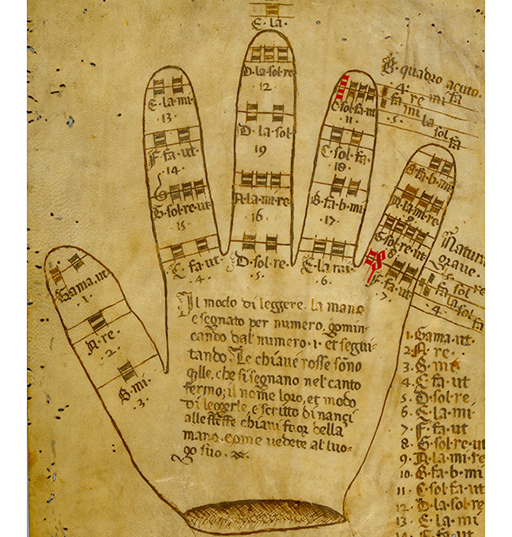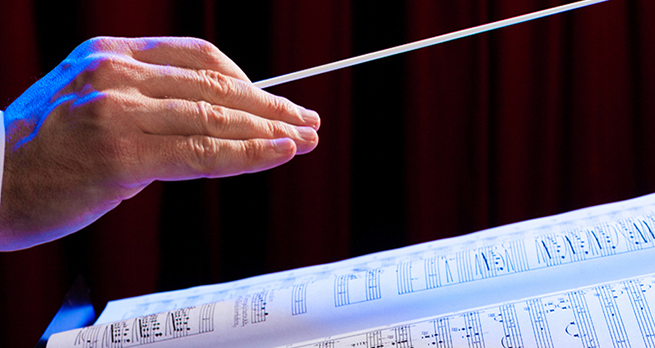1.2.3 Guido of Arezzo
The big breakthrough in notation came around 1030 AD when the monk, Guido of Arezzo wrote a treatise called Aliae Regulae, in which he demonstrated how a single horizontal line could be drawn on the page as a point of reference for one fixed and named pitch, so that singers could relate all the other notes to it. Guido had already invented a system for reminding singers of the notes of a melody using the joints of the fingers of one hand and pointing to them with the other. You can see this original system in Figure 9.

Try drawing a line to represent the note you start on and attempt the previous activity again, putting those coins or buttons down in relation to the line. With a point of reference, you will more easily recognise how far up from the first note the melody rises and then falls back below it, and finishes by going just a little bit lower before coming back up at the end of the phrase. Figure 10 shows an attempt at this activity.

Guido later added a second, line five notes higher which made things even better as singers could relate their notes to either line. Once the idea of horizontal lines drawn on a page took off, it became the basis for all subsequent developments. All that was needed was for one line to be identified and all the others would be recognisable.
The mark that fixed the pitch of that one line became known as a clef. Rather than just two lines, our modern scores consist of a group of five lines called a staff, hence musical notation is also called staff notation. The two most common clefs (shown in Figure 11) are those that fix the note G for higher notes, called the treble clef, and F for lower notes, called the bass clef. Used together they are known as the grand staff and form the basic layout of a piano score. One other common clef indicates the position of C and is often used by instruments in middle registers.

